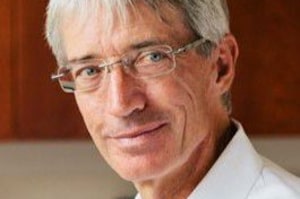Just as the baby boomers brought us free love and rock 'n' roll, they're also leading the way into pension-less retirement. Those who are near or just into retirement are in a tough spot. They have a long time horizon and need investment returns that are well in excess of inflation. And yet, low-risk investments provide minimal return (negative after inflation), and owning higher risk securities has been harrowing and less-than-rewarding over the last five years.
While most people entering retirement feel some level of anxiety, it is those who don't have a defined benefit pension plan and don't know if they'll have enough to fund their retirement who experience the most stress. What they want more than anything is certainty, but that's hard to come by in today's low interest rate environment.
There are no easy answers to the no-DB dilemma, although any solution should start with a financial plan. Rather than wondering and worrying, some work up front with an adviser or fee-for-service planner will bring clarity to the issues, if not peace of mind. And as devoted followers of the column below this one know, a proper plan will likely recommend a combination of strategies.
Work longer
It's not what people want to hear, but the best way to set up the next 30 years may be to work the first two or three. Every year adding to the nest egg, as opposed to drawing on it, improves the retirement calculations significantly.
Spend less
There are three variables in the calculation – life span, investment return and spending. Everyone wants to maximize the first, so the conversation is most often focused on the second. "How can I get a better return?" As Andrew Rice of the financial planning firm, Stewart and Kett, reminded me, however, the least considered variable – spending – has the most impact on what the numbers look like.
Increasingly, I'm seeing our clients build flexibility into their spending patterns. They make adjustments based on how their portfolio is doing. When their capital base is temporarily depleted due to weak markets, they dial down their spending and postpone the new car, kitchen renovation or world cruise.
Take more risk
The most common response to the no-DB dilemma is to reach for a higher yield by owning riskier securities. Instead of getting regular income from guaranteed investment certificates and government bonds as investors did 10 years ago, corporate bonds, income-oriented stocks and structured products are now playing a bigger role.
Most of the time, the income flow from these higher octane securities feels the same as the GICs and government bonds of the past, but there will most assuredly be market-related jolts from time to time. The corporate bond market is known to shut down at inconvenient times (2002 and 2008 being prime examples), which means corporate bond prices will experience significant price declines. And even the most conservative stocks will be taken down in a bear market.
Taking more risk should be a core strategy, but young retirees need to be careful not to focus too much on acquiring current income such that they put future income at risk. Higher-yielding investments don't necessarily produce a better return (Yellow Media being an extreme example), especially when the yield entices investors to pay more than what a company is worth.
Focus on total return
So income seeking has to come in the context of a portfolio that's structured to produce the best total returns (interest, dividends and capital gains). For an investor with a 20- to 30-year time horizon, there has to be a balance between generating current income and building a capital base that will produce future income.
Despite the headlines, stock investing still has the highest probability of achieving returns in excess of inflation, although the journey is sure to be bumpy. Investors need to go beyond the banks, pipelines and REITs, and build portfolios that have exposure to resources, health care and technology, include small and medium-sized companies, and go beyond our borders with U.S. and international stocks. I don't expect retired investors to embrace market volatility the way young investors should, but it's important that they plan for and use it appropriately. The current investing environment requires that early retirees find a balance in their lifestyle choices and the risks they take in their portfolios. While every situation is different, people in early retirement still need at least 50-per-cent equities in their portfolio.
Tom Bradley is the president and founder of Steadyhand Investment Funds.
 Tom Bradley
Tom Bradley